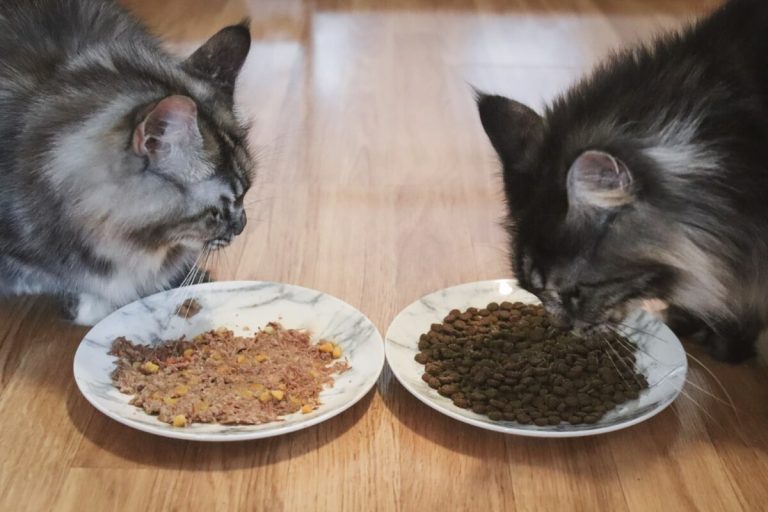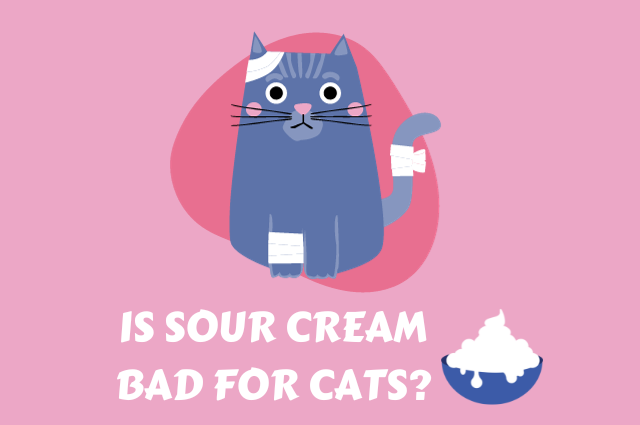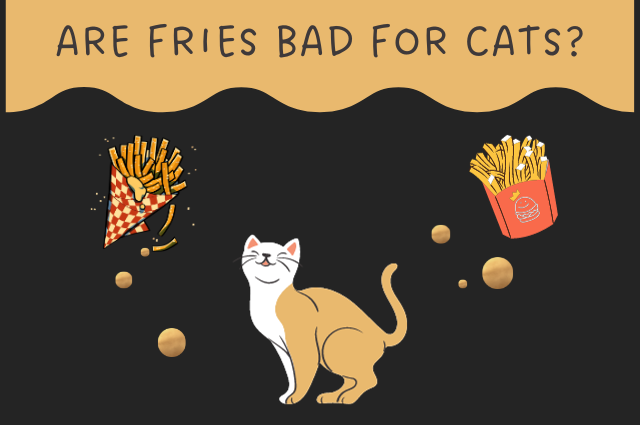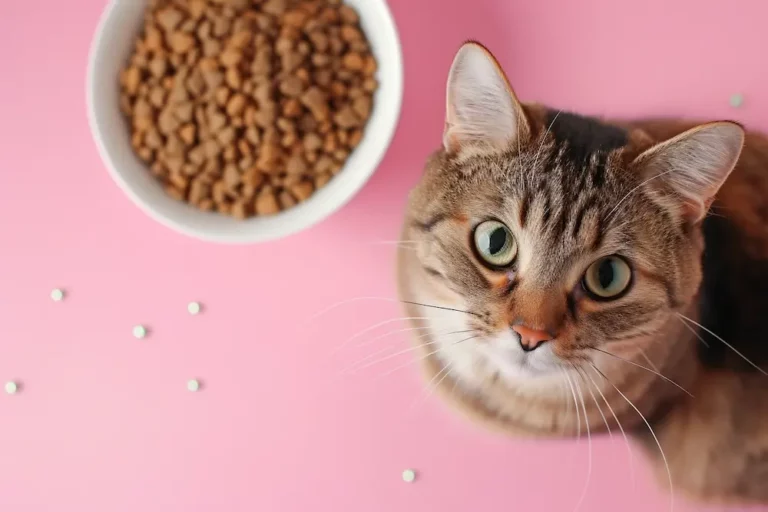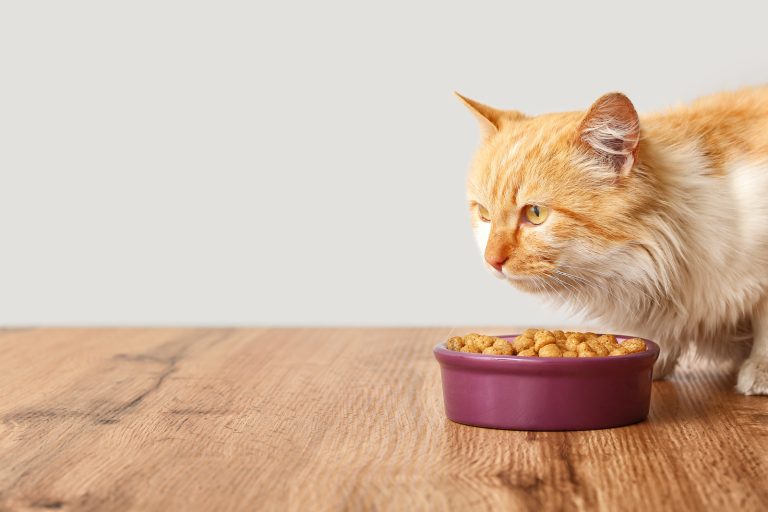If you’ve been recently introduced to the science of being owned by a cat, one of the first questions you’ve asked yourself was probably how much to feed a cat in order to keep her healthy and happy? The answer isn’t very short, as there are some factors to consider in setting your cat’s feeding schedule and menu. Below you’ll find a few basic rules that make up a cat feeding guide.
As you’ll find out, every daily feeding guide for cats will talk about the two main categories of nourishment you can find on the market: wet and dry food.
As most cat owners eventually opt for a combination of the two, we will take a look at all the three possibilities, and talk about the quantities and serving methods for each of them.
Finally, as cats are not all the same, we’ll gaze at some of the different food requirements for the cats that have a more fragile condition than your average one.
How many times do you feed a cat?
While most veterinarians will tell you that a single meal per day is enough for the average adult cat as long as it is balanced and complete, some think a two-serving meal a day has the advantage of not allowing the cat to grow too hungry in between meals. However, free-feeding the household cat has become a common practice in today’s daily rush, with the only disadvantage that you can’t closely control how much your cat eats at a time.
If your schedule is too hectic to allow you to feed your cat on a well-adjusted routine, don’t feel guilty! You can resolve this issue by searching for a slow feed cat bowl or a cat food automatic dispenser, that come in multiple shapes, colors and sizes.
The average cat feeding guide for wet food
Cats are known for their lack of interest – to put it mildly – in water, and that’s something that is also available when it comes to their water intake. That’s why serving your cat wet food is a good way to make sure she stays hydrated without having to time her water drinking habit and force her hydrate on your own pace. Wet food servings usually contain 70% – 80% water and so they’re a very good choice if your furry friend is hard to convince to drink from the bowl.
As most of the wet food brands offer multiple choices of ingredients and tastes, it is important to try and pay attention to your cat’s preferences, as she will probably adjust her feeding quantity based on how yummy she finds the food you’ve chosen. The main risk here is overfeeding your cat if she has free access to it, as she might not stop herself from eating even though she’s reached a state of repletion.
However, wet food spoils very quickly, so it is best to see that your cat eats it under supervision, in the course of one hour or so. If you have leftovers and wish to preserve them, a plastic bag put into the refrigerator will keep the food fresh up to three days. Be careful, though, serving a cat food that’s too cold can lead to health issues, so be sure to let the food reach room temperature before you serve it.
On the other hand, if your cat doesn’t like that particular wet food, she will probably not eat as much as it would be necessary and, in case she’s not an indoor cat, try and complete her diet by hunting or even going through trash cans or other people’s porches.
When trying to determine how much wet food you can feed your cat, the best method is to consider the number of calories that are necessary to sustain your cat’s energy.
The number of calories is determined primarily by the weight of your cat. You can also apply the grams of food/kg of body weight, but different brands put different ingredients in their products, so the energy and nutritional values will be different in a set quantity of each, ending in you having to check the package indications every time you change the food type.
The Merck manual for veterinarians teaches us the formula to determine the number of kcal a cat needs every day. First, you need to know the weight of your cat in kilograms, and you get that by multiplying the number of pounds with 0.4536. After this operation, the formula goes like this: X =  70 x [nr. of kg]∧0.75. The result of this operation, X, will then have to multiplied either by 1.2 if your cat is neutered, or by 1.4 if she is intact.
Of course, many factors influence the energy requirements of our small friends, such as the environment, their age, their daily activities, and above else, their health status.
The average feeding guide for dry food
Surely, if your cat likes to drink water, feeding her only dry food is quite alright. The only thing you need to check is the kcal/cup content of the chosen brand, and then do the simple math by using the formula above.
But if she rarely drinks or asks for water, you must take into consideration that dry food contains just about 6% – 10% water, and the rest will have to be provided some way or another. Water is the most important part of any diet human and animal (with very few exceptions) and it’s deficiency or lack can lead to serious health issues and eventually death.
As we were saying before, when it comes to the method of serving, dry food is more permissive, since it can stay out without spoiling for a much longer period of time. Being usually packed in zipper bags, you can easily preserve the quantity you don’t need without worries, and measure exactly how much food you leave for your cat.
Unfortunately, free feeding can lead to obesity if you don’t pay attention, but there are several ways to control the quantity of dry food your cat eats. First of all, you can always simply measure the amount of food you leave in her feeding tray, depending on the number of meals you want to feed her during the day.
However, if you are gone for long periods of time, you can’t protect your cat from the nasty effects of eating too quickly or too much at a time.
A food dispenser can be set to release a particular amount of kibble at particular times during the day and could come in really handy if your cat is left alone a lot. They also come with different programming options, and prices vary quite a lot based on their features. On a less positive note, the servings are available in one tray, so a dispenser is fit for a one-cat household.
Another option is a slow feeding bowl which is considerably cheaper and can accommodate more than one cat. It basically consists in a bowl that has crevasses, spirals or holes in its design so that picking up the food from it requires quite some effort from your cat. This way, eating takes up more time, helping the digestion process run more smoothly, and making your cat feel full after eating less food, leaving room for her other siblings to eat as well, or making her divide her meal into more servings in a natural way.
The average cat feeding guide for mixed food
There’s no rule regarding the proportion of wet or dry food in a mixed diet. It all depends on your cat’s preferences, your schedule and your budget.
Yet, it is crucial for the cat’s health to stick to the kcal/per day recommendations, and especially, to oversee the water intake, in case you choose for only a small quantity of wet food. Also to be considered, wet food has a special term of availability if left at room temperature, so it is best to leave only the dry food out for free feeding.
Although we’ve been talking only about industrially processed food so far, you should know that if you have the time, you can also prepare healthy, complete meals for your favorite pair of paws. Naturally, cats are carnivorous, so their diet requires animal protein and  fat, but also fibers, carbohydrates, calcium and vitamins. While it would take a long research to come up with the perfect homemade diet, we think it is worth both the time and the effort.
However, it is not a subject to treat lightly, as there are a lot of natural ingredients, such as chocolate, onions, raisins and so on that have a known negative effect on cats health. We suggest a visit to your veterinarian, who can give you more detailed and accurate information on what meals you can prepare for your cat.
Think outside the box
Although we know of no kitty who would rather be outside of the box, it’s important to understand that every cat is different, not only when it comes to the environmental and personality characteristics, but primarily regarding her physical traits and condition.
A cat that lives indoors and has an obesity inclination or problem will need to have its diet adjusted, and the same goes for a cat that has any kind of health issue. Although there are some guidelines for the energy requirements of obese cats, the matter is still delicate, and should be addressed to a veterinarian.
You might also like: Barley grass for cats
Fortunately, there are more categories of cats than just average, obese and ill. For instance, you may be in the position to want to know what to feed a pregnant cat. Latter on, you will probably be more interested in a kitten feeding guide.
As you might observe, almost all cat feeding guides recommend feeding the pregnant cat kitten food. This has a very simple explanation: kitten food contains more protein, fat and nutritional elements that are needed for the growth and development process. As the momma-cat has to ensure the nutrition for herself and for her tiny inhabitants, she will need all the support she can get from high-energy foods.
Even though there are cases where a cat gains too much fat during her pregnancy, the bigger danger appears when she is malnourished. Underfeeding a pregnant cat can lead to underdeveloped kittens and even abortion. This is why free feeding your pregnant cat is the best way to go. Dry food for kittens should be available for her at all times, even after birth, as she will still have high energy and nutritional needs during the nursing period. Also, kittens will switch more quickly to solid food, if they come in contact with it from the beginning.
There’s no surprise that kitten food has the main purpose of feeding kittens, as they have extremely high needs when it comes to the food content. After just eight weeks, a kitten is usually weaned, and will need you to provide enough food rich in protein, vitamins and calcium to support her fast-paced growth rhythm.
Not only do kittens require a more rich food that the adult cat, but they also need to be fed more times a day. Specialists say that feeding the kitten three or four times a day should be enough, just as long as you bear in mind that a kitten needs almost three times the energy an adult cat does.
The bottom line
Cats are living beings, and as such, their eating schedule can be regulated and influenced with little harm to their health. The question that we should address as cat owners is not how many times a day should a cat eat, but what are the food requirements of your personal cat, and as we’ve been undelining, they depend on a series of factors that can’t be properly analysed in a short text. However, the basic rules we’ve laid out are there to help you observe your cat’s nourishment needs.


